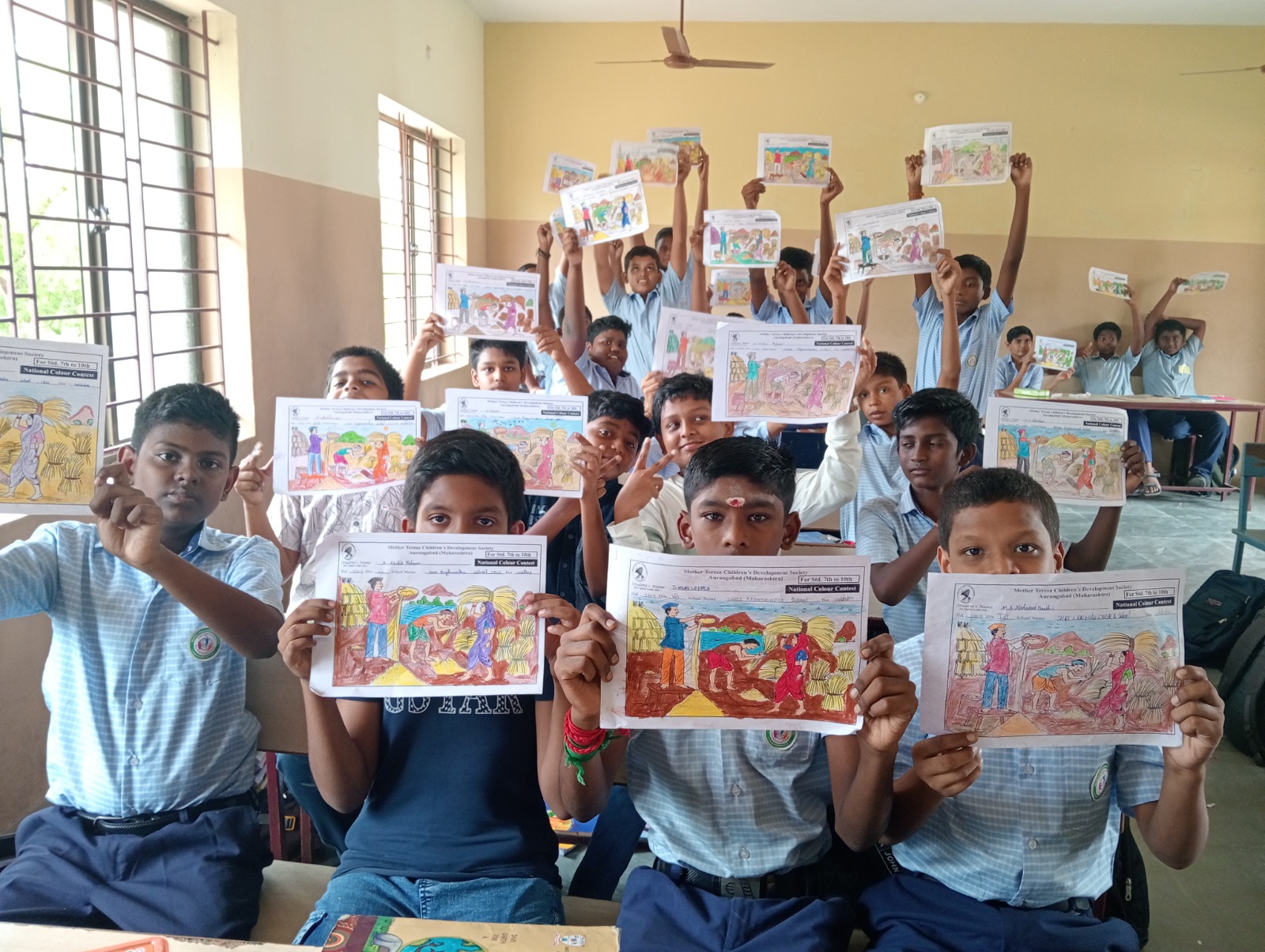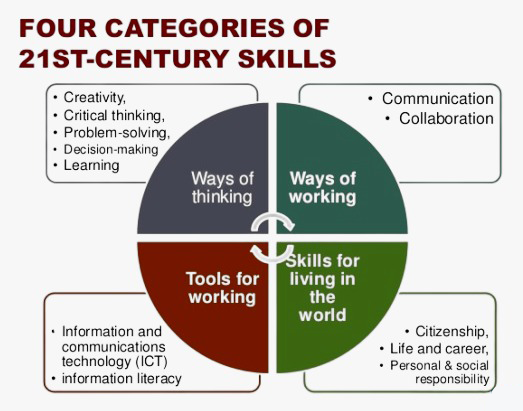

As students grow more comfortable in the digital world, they can better find ways to use technology to solve problems and create innovative solutions. Technology also enhances their learning experience, providing them with new opportunities for growth and development. In addition to teaching 21st Century Skills in the classroom, we also provide opportunities for students to put their skills into practice.
This include using technology to develop projects and presentations, participating in problem-solving activities, or engaging in collaborative efforts with other students.
By providing meaningful learning experiences that require 21st Century Skills, our students are better prepared for the future and gain a deeper understanding of how to use technology responsibly and effectively.
Learning Skills: Also known as the "four Cs" of 21st century learning, these include critical thinking, communication, collaboration, and creativity.
Life Skills: Flexibility, initiative, social skills, productivity, leadership
Literacy Skills: Information literacy, media literacy, technology literacy
The 21st Century Skills are a framework of skills, knowledge, and attitudes that students will need to be successful in the digital age.
These include critical thinking, communication and collaboration, creativity and innovation, information literacy, media literacy, digital citizenship, problem-solving and decision-making. As technology evolves rapidly, these skills become even more important for students to learn.
We are increasingly focusing our curriculum on teaching these skills to better prepare our students for the future.
Technology is playing a larger role than ever before in our lives, and students must be taught how to use it responsibly, ethically, and effectively so they can succeed in the digital world. With the right skills and knowledge, students can make the most of their future opportunities.
we encourage creativity and critical thinking by providing opportunities by incorporating problem based learning activities and open ended questions of lessons to make them think out of box Additionally, we provide opportunities for students to work on projects that allow them to be creative and use their critical thinking skills.
Utilizing technology is great only when it can enhance learning. For example, We use online teaching /learning tools, video conferencing software, and social media platforms to help students learn more effectively. Additionally, we use educational apps and websites to supplement lessons and give students additional practice with 21st-century skills.
In the 21st century, students need to know how to work together effectively, and we encourage them to communicate clearly, listen attentively, and respect others’ opinions. We promote collaboration by incorporating group work into lessons and encouraging students to share their ideas with the class.
With the advent of the internet and social media, it’s easier than ever for people from all over the world to connect. As such, students need to be aware of different cultures and perspectives. We promote global awareness in classroom by incorporating international news stories into teaching lessons, having guest speakers from other cultures visit our School , or taking students on field trips to local cultural institutions or events.
In today’s world, everyone needs to be digitally literate—that is, to use computers and other digital devices effectively. We promote digital literacy in classroom by incorporating computer-based activities in teaching and learning with instructions to search for information online safely and responsibly.
We give students daily opportunities to talk and work together as a great way to promote 21st-century communication skills in the classroom to encourage collaboration, such as group desks or seating arrangements leading naturally to conversations. Students ask each other questions to further their understanding of the material rather than simply relying on their teacher for all answers. During class activities, we encourage our students regularly present their discoveries and findings to their peers. This will help them develop verbal and nonverbal forms of expression and give them practice in presenting ideas in front of an audience.
Emphasizing problem-solving skills is an essential way of promoting 21st-century skills in the classroom. Problem-solving teaches students to think outside the box and apply critical thinking skills to real scenarios. This helps them acquire a deep understanding of their course content as they search for creative solutions. 8. Media literacy skills Having students comprehend the significance of questioning and evaluating media sources can give them greater insight into why various messages exist and empower them to become informed consumers of news and cultural messages. Within the classroom, we use current events or popular news stories as starting points for discussions that practice their critical thinking skills, about why certain information is being presented and how it may be biased in certain ways.
Incorporating divergent thinking, brainstorming activities, and problem-solving into daily lessons provides students with a chance to express themselves while developing new ideas. Encouraging conversations that explore different perspectives on the topics being discussed allows kids to become more aware of their ideas and encourages them to have an open mind when considering others' views. It's also beneficial for them to work in groups or teams, as this allows group collaboration on creative executions of lesson topics.
This is being accomplished by offering students the opportunity to design their projects, providing guided support to help build upon previous failures and successes, and engaging in classroom dialogues that foster critical thinking and exploration. Resilience, defined as "the capacity to recover quickly from difficulties; toughness", is a key attribute for success in the modern world; similarly, self-advocacy enables individuals to take control of their learning journey and rely less on external motivations. Having 21st-century skills in the classroom is essential for student success. Not only does teaching 21st-century skills provide students with great life and career opportunities, but it gives them the tools necessary to become more productive citizens of the world. Adding activities that increase collaboration, critical thinking, and organizational and communication skills will leave a lasting impression on students as they progress in their educational pursuits.
Having students comprehend the significance of questioning and evaluating media sources can give them greater insight into why various messages exist and empower them to become informed consumers of news and cultural messages. Within the classroom, we use current events or popular news stories as starting points for discussions that practice their critical thinking skills, about why certain information is being presented and how it may be biased in certain ways.
